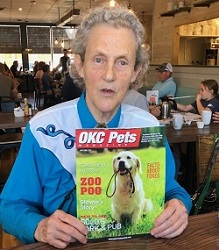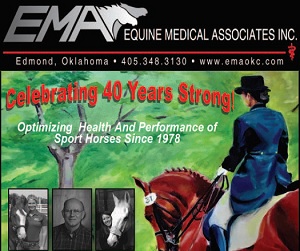take visitors on an incomparable experience
at the National Cowboy and Western Heritage Museum
By Shauna Lawyer Struby
Photos courtesy of National Cowboy and Western Heritage Museum
In the early 1950s, Chester Reynolds, once a president of Lee Jeans and an entrepreneur, visited the Will Rogers Memorial in Claremore, Oklahoma, a limestone facility that opened to the public in 1938. Inspired by his visit, Reynolds came up with the idea of a monument or memorial to the American cowboy. Although Reynolds was not a cowboy, he was a native of Kansas City, Missouri, who homesteaded in Kansas and Colorado, and grew up when the transformation of the 19th-century American frontier that took place from 1865 to around 1895 was still fresh in collective memories.
“He thought there ought to be some place to preserve the relics and artifacts that relate to the history of the American West. At the time, there were very few museums in the United States and none that focused on the American West,” said Michael Grauer, McCasland Chair of Cowboy Culture/Curator of Cowboy Collections and Western Art, National Cowboy & Western Heritage Museum.
To gauge interest and support for such a project, Reynolds contacted governors across the Western states, which led to a competition among 46 western cities to become the home of the museum. The competition process narrowed the field of cities to 10, then three—Dodge City, Colorado Springs and Oklahoma City—with Oklahoma City eventually winning the competition to host the museum.
“One of Reynolds’ requirements was the museum had to be on a well-traveled highway and in a prominent location. There were no interstates yet, but being on Route 66 certainly didn’t hurt, and Persimmon Hill was chosen as the site because it sits up above the surrounding area,” said Grauer.
Although the museum project was founded in 1955, holding a design competition for a building to house the museum, raising funds, construction, and then acquiring artifacts and collections took 10 years. The museum finally opened its door in 1965, and early accomplishments included the creation of the Rodeo Historical Society, Rodeo Hall of Fame and the Hall of Great Westerners. With the hiring of Byron Price, who served as the museum’s director from 1987-1996, the museum’s collection of historical artifacts and art expanded significantly.
“By the mid-1990s, the museum was a place to be reckoned with,” said Grauer.
Today, the National Cowboy & Western Heritage Museum in Oklahoma City has evolved into a premier institution of Western history, art and culture. The museum is nationally and internationally known for its collection of more than 35,000 Western and American Indian artworks and exhibits, and its dynamic educational programs exploring all aspects of the American West. The museum encompasses more than 60,000 square feet of exhibit space and more than 200,000 total square feet of overall space.
The museum’s curved canopy entryway is the first hint to visitors they’re in for an exceptional experience. Once in the museum, the powerfully poignant and monumental sculpture, “The End of the Trail,” by James Earle Frazer, beacons visitors for a closer look. “The End of the Trail” depicts a downcast American Indian warrior on horseback and introduces visitors to the diversity of stories, experiences and the complex history of the American West.
In 2014, the Metropolitan Museum of Art, New York, New York, presented an exhibit, “The American West in Bronze, 1850-1925,” that included a smaller bronze version of “The End of the Trail.” In an interview about the exhibit published by the museum, Jeffrey Gibson, a contemporary painter, sculptor and member of the Mississippi Band of Choctaw Indians who is also half Cherokee, reflected on his shifting perspective of the sculpture. Initially, he felt the sculpture conveyed defeat and despair, then, over time, came to view the sculpture differently.
“I have come to see it as a symbol of resilience and strength—characteristics traditionally associated with the warrior,” said Gibson in the interview. “I no longer see this as the end or as defeat. Instead, I see a warrior who is taking a break before getting back up again. There is a degree of lament, but there is also a strong sense of honor and determination.”
Moving on from “The End of the Trail,” visitors are immersed in the museum’s galleries. Each showcases a different aspect of the American West and includes explorations of the American cowboy, rodeos, the American Frontier and Native America, the art of the American West, Native American art, and Western performers. Indoor and outdoor sculptures are found throughout the 18-acre museum site while other galleries are devoted to the Prix de West collection and fine firearms of the period.
Notable art includes works from renowned artists such as Charles Marion Russell, Frederic Remington, Albert Bierstadt, Solon Borglum, Edward Borein, Robert Lougheed, Charles Schreyvogel, Joe De Yong, James Earle Fraser, Laura Gardin Fraser and more than 700 pieces by Edward S. Curtis. The museum also boasts the world’s most extensive collection of American rodeo photographs, barbed wire, rodeo saddlery and early rodeo trophies.
Special exhibits are another feature of the museum, such as the current “Warhol and the West” exhibition on display through May 10, described as the first museum exhibition to fully explore Andy Warhol’s love of the West as represented by his art, movies, attire, travel and collecting. Another current exhibit, “Dorothea Lange: The Politics of Seeing,” explores Lange’s “riveting, intimate photographs. Known for portraying “some of the most powerful moments of the 20th century,” the exhibit includes some of Lange’s photos of Dust Bowl migrants during the Great Depression and incarcerated Japanese Americans during World War II.
Throughout the year, the museum also produces and hosts annual events. The Chuck Wagon Festival, the Western Heritage Awards, and the annual Prix de West Invitational Art Exhibition and Sale are examples of some of the more significant events. But the museum also hosts an ongoing slate of educational and entertaining programming for all ages that includes films, music, workshops and fundraisers.
The prestigious Prix de West brings together outstanding painters and sculptors from across the West and is one of the nation’s premier Western art events. The show features more than 300 paintings and sculptures by contemporary Western artists along with art seminars, cocktail receptions and awards. Exhibiting artists represent a diversity of styles ranging from historical pieces reflecting the early days of the West to more contemporary and impressionistic works.
One of the museum’s most exciting happenings in 2020 is the upcoming unveiling of Liichokoshkomo’ in March. Liichokoshkomo’ is a Chickasaw phrase for “Let’s play!” and features a hands-on, outdoor educational and playscape experience. The cross-cultural setting of Liichokoshkomo’ is comprised of more than 100,000 square feet and includes dwellings representing seven indigenous groups, a sod home, a trading post, a playground canyon, a wild buffalo herd, a geyser and waterfall.
Throughout the museum’s collections, artifacts and exhibits, horses have an integral role in American West stories and experiences. As Grauer notes, they are as iconic in the American West as cowboys and Indians.
“You cannot go through any of our galleries and not see obvious references to horses. From the very first gallery you encounter, you step in, and the first thing you see are horses, either in sculpture or in painting,” said Grauer. “We cannot tell the story of the American West, or the American Indian, or the American cowboy without a horse.”
One of the museum’s recent exhibits, “Caballeros y Vaqueros,” traced the birth of the American cowboy from north and west Africa, to Spain, to the New World, colonial Mexico and eventually America’s West. The exhibit revealed the multicultural roots of cowboys—Native American, European, African and Islamic traditions all informed what became the American cowboy. And again, Grauer emphasized how integral horses are to the cowboy’s story.
“Historically, the horse was a symbol of distinction. Some of the oldest known art objects are in the shape of horses,” said Grauer. “Horses are appealing for their power, their strength, their grace. All those things are part of their attraction and their place in history.”
The National Cowboy and Western Heritage Museum will celebrate its 55th anniversary this year. Chester Reynolds’ dream come true is in full bloom. Well-positioned to continue discovering and sharing the stories of the American West, its people, animals and places, it’s easy to imagine the museum as a destination that will continue to capture the imagination of people from around the world for many years to come.
“The National Cowboy and Western Heritage Museum is a part of Oklahoma City, but its appeal is universal,” said Grauer. “It belongs to the nation and the world. It’s a beacon and destination for people interested in the American West. There’s simply nothing like it anywhere else.”

